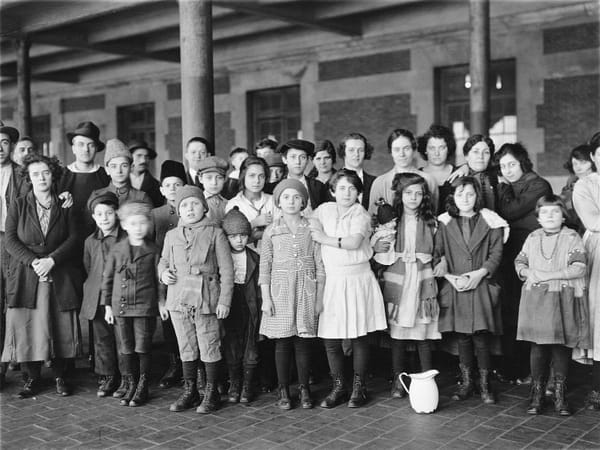The Myth of the Comfortable Peasant

In recent years the modern world has come under fire. In 2022, one study found that 58% of Americans said they were dissatisfied with how democracy is working in the United States. Similarly, in 2021 another found that only 49% of 18- to 34-year-olds held a positive view of capitalism, down from 58% just two years earlier. Among Gen Z that number falls to 42%. The merits of these notions generally can be debated elsewhere. The ink here will be spent analyzing one specific, and particularly egregious suggestion that arises on occasion from this topic. Namely that we would all be better off as feudal peasants.
The argument pops up from time to time in articles, think pieces, and social media posts. It has a handful of leftist adherents in the camp of rejecting capitalism at all costs. Mainly though, the idea finds purchase among a right wing crowd who push for a return to traditional values, models of society, and some sort of “natural order.” Though the surrounding details change, the central gist remains: European serfs of the Middle Ages actually had certain things figured out and we have lost the way. They cite selected passages of Juliet Schor’s 1992 book The Overworked American: The Unexpected Decline of Leisure which purport to show that the humble European peasant was happier, healthier, and lived a more leisurely life than the average American in the 20th century.
Peasants worked less than you?
This is the central theme of Schor’s book, and usually the headliner in this specific brand of “This Is What They Took From You” arguments. The premise is simple. Life as a commoner in the days before industrialization was built around agricultural work and therefore, labor could only be performed in the time between planting and harvesting. In the temperate climate of Europe this would leave the winter months free from work. Additionally, the church mandated that Sundays and its slate of feast days would also be spent away from the fields. In the end, Schor estimates, an adult male serf in 13th century England would put in about 1,620 hours of work per year. This amounts to around 10% less than the 1,780 yearly work hours averaged by Americans in 2017.
Here though we find our first area of confusion: a narrowing of the idea of labor. The inclination of the theory’s proponents is to view medieval agricultural work as a direct parallel to our modern idea of “jobs” in which there are days of work and days of non-work. Agrarian peasants would not have such distinct lines. Livestock still needed to be cared for in the winter months. Firewood would have to be cut and water drawn from wells even on Sundays and feast days. To not labor was to go without. If such tasks increased the average daily work by even half an hour we arrive at or very close to the modern American average. This also does not take into account the strenuous physical nature of labor at the time, largely alleviated in modern industry.
Additionally, it should be mentioned, the framework of the argument only applies to agricultural work. The domestic labor (performed by women in the medieval period) such as cooking, sewing, and child rearing would see less decline on feast days and in the winter months if any at all. The dismissal of this specific variety of labor has of course continued into the modern era. Though much domestic work is now paid, it is estimated that the total amount of unpaid domestic labor globally could amount to 9% of global GDP. Even so, on this front studies have found the past 100 years have seen labor-saving technology demonstrably reduce the time required for household domestic tasks by 60%.
Peasants paid less taxes?
Another recurring element in this line of thinking is the assertion that today’s taxes are an encumbrance that would have been unthinkable during the days of feudal Europe. Again, this seems to be a misunderstanding brought about in part by an attempt to draw a direct line between present and past. The main payments serfs had to make were indeed rent payments, but as the landlord was also the local government it would be somewhat disingenuous to specifically say these could not be considered taxes. This rent, paid sometimes in cash but more often in kind (agricultural yield, labor, or livestock), could amount for up to 50% of a serf’s labor.
Even if we accept rent as its modern namesake, the claim of low taxes on peasants is hard to justify. Another 10% of output was given in tithes to the church. Lords could additionally levy fees such as merchet when a serf’s daughter was married or heriot when he succeeded his father upon the latter’s death. In times of crisis or war (or simply declining revenues) the crown might even call for the dreaded poll tax that required payment for every member of a household. At the end of the day peasants were the nobility’s source of income, and they were usually treated as such.
Peasants ate better than you?
A strange point to press in that it seems to be based on the sheer caloric intake. While there is still a wide range of debate on this (due to lack of record keeping on the subject) some historians believe that agrarian workers did indeed consume much greater quantities of calories that a modern human due to the highly demanding nature of farm labor with some estimates doubling the average American’s or more. There was however little variation in diet. Some sources estimate total calories to be at least 50% grain without much in the way of meat until the 15th century. This was rounded out with vegetables and cheeses. The use of spices among commoners was unheard of. The argument that this constitutes “eating better” than most developed nations is a weak one. After all, if you want to eat 2,000 calories of carbohydrates in a meal it is available, affordable, and no one is stopping you.
Where things got dicey for the peasantry however was the degree to which their food was at the mercy of environmental conditions. In the winter months fresh fruits and vegetables became unavailable to most parts of Europe which then caused a spike in diseases like scurvy. Worse, cyclically occurring famines were common throughout Europe in the period. It is believed that, in England, 23 of the 140 years between 1210 and 1350 experienced poor grain harvests and that half of these instances translated into widespread food shortages. Even in the best of times the threat of lean days was not far off.
Peasants were healthier than you?
At this point we come to perhaps the most ludicrous argument of the bunch. It hinges on the vague idea that some elements of modernity are doing massive amounts of damage to our wellbeing. And while processed foods and microplastics are certainly worth some concern, the evidence does not bear out the idea that humanity was somehow healthier 700 years ago when child mortality rates sat at 25%. For those who survived into adulthood, lack of hygiene, medicine, and dirty, crowded living space made for a perilous existence. In 14th century England life expectancy for those who reached 25 was 50.7. This is 31 years less than England today.
Conclusion
All of this is not to say that we should discourage the notion of labor reform. America is unique among developed countries in its lack of mandated paid leave, one in four private sector workers receives no paid leave, and those who do generally receive less than their European equivalents. Union density has decreased to a mere 6.4% among public sector jobs in the US which is appalling enough in itself before being compared to France where 98% of workers fall under some collective bargaining agreement. Meanwhile, wages in recent decades have not kept up with increases in productivity and we are certainly far from the world Keynes foresaw in which a 15-hour workweek was the norm.
The idea that we can approach a higher quality of life by looking backwards though should be left by the wayside. If we look to estimates of per capita GDP in England we can see that the average purchasing power was only around £800 (in 2016 currency) for much of the medieval period, rising to hover above £1,000 following the societal shifts heralded by the Black Death. Though there is some guesswork in this method, it points to a 30-fold increase in production and consumption of goods and services from this period to today. While we should be wary of making the same mistakes pointed out earlier in this article and drawing a one-to-one comparison between the past and present, such an increase in material wealth cannot be ignored.
In an actual analysis of the feudal period leftists in particular would do well to consider the economic exploitation of the peasant class by the nobility (which, Marx noted, defined the productive mode of the time), and people of all political stripes should consider the downside of subsistence farming as a whole. Namely that it rarely produces the surpluses necessary to facilitate specialized projects that increase quality of life. To train a doctor or develop a system of plumbing for example requires a person to forego agricultural work in favor of this other endeavor, while still being sustained by the product of agricultural work. This means relying on the kind of surplus that was uncommon at the time. It also implies that the move towards a better world (the alleviation of the issues involved in feudal life) involves a shift away from the solely agricultural work that the original argument fetishizes. By all signs, the road to Utopia leads forward, not back.
Featured Image is Two Young Peasant Women, by Camille Pissarro




